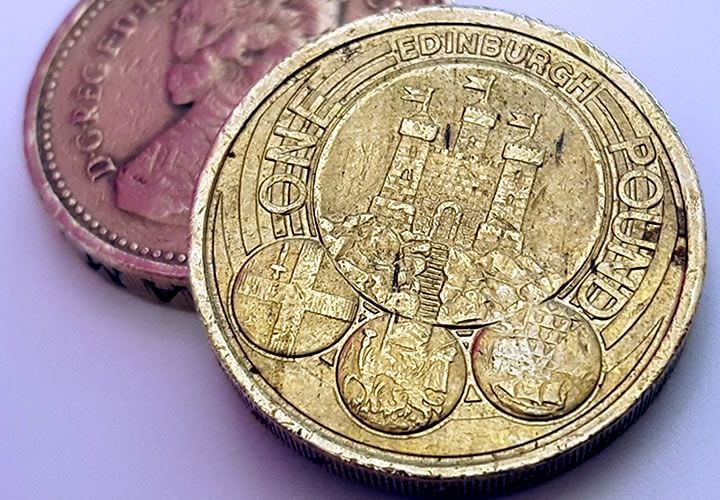Pound-to-Euro: Compilation of Major Bank Forecasts for 2018 Year Ahead
- Written by: James Skinner

"Analysts’ forecasts for GBP/EUR range from 1.04 to 1.25, a range of just over 20%,” - Lloyds Banking Group.
The Pound-to-Euro rate could rise or fall by a double digit number in 2018, according to some forecasts, as the saga of Britain’s exit from the EU plays out toward its conclusion and central bank monetary policies evolve on both sides of the English channel.
This range of forecasts comes together at the tail end of a year where the Pound has traded within a 12 cent range against the common currency, reaching as high as 1.2030 in April before plumbing lows beneath the 1.0800 threshold in August.
Sterling moves toward the final session of the year trading at 1.1266 against the Euro and carrying a -3.98% loss for 2017 overall.
Key to the frenetic performance has been the ebb and flow of rumours, hopes and fears over the single market, customs union and what Brexit should really mean. The first interest rate hike in a decade was also an important factor in pulling Sterling back from its August precipice.
Those same questions will haunt the currency again during the twelve months to December 2018, but the performance of the UK economy and question of whether the Bank of England will attempt to raise rates again will also be key.
Added to this, whether or not the European Central Bank follows up the October 2017 curtailment of quantitative easing with a full exit from its crisis era stimulus program will have just as much an influence actions and exits quantitative.
Analysts give their views on the likely culmination of all these factors below.
Analyst Views:
Hans Redeker, head of global FX strategy, Morgan Stanley
“EURGBP is trading at the lower end of the trend channel, suggesting potential upside risks, and we watch the 0.88 figure closely to gauge near-term momentum.”
“When volatility breaks higher, currencies with foreign funding needs (either because of external liabilities or because of a current account deficit) will suffer most. GBP and CAD have the widest current account deficits within the G10, while AUD and NZD run high external liability positions.”
“We would suggest that being long (buying) EUR and JPY against AUD, NZD, GBP ,and CAD should do well into 2018.”
The Morgan Stanley team are betting the Pound will fall against the Euro and Japanese Yen in the year ahead.
They forecast that the Euro-to-Pound rate will rise to 0.9400 by the end of the year, which puts the Pound-to-Euro rate down at 1.0638.
Asmara Jamaleh, economist at Intesa Sanpaolo.
“If data do not disappoint, and generally confirm the BoE’s growth and inflation outlook, and assuming the United Kingdom manages to sign a “good” deal with the EU, sterling should be in the position to stabilise and, against the dollar at least, to strengthen slightly over the course of next year, towards GBP/USD 1.38 by the end of 2018.”
“Against the euro, a stabilisation around the EUR/GBP 0.86-0.88 range should prevail, rather than a strengthening, due to the simultaneous appreciation of the EUR/USD.”
Dr. Vasileios Gkionakis, head of FX research at UniCredit Bank
“A done deal is likely to push GBP-USD higher, towards 1.40, and put pressure on EUR-GBP. A break of EUR-GBP below 0.8760 would expose the pair to more downside.”
EUR/GBP of 0.8790 puts the Pound-to-Euro rate at 1.1415.
David A. Meier, economist at Julius Baer
“The exit deal will not lead to sustained pound relief, as we continue to expect the UK to lose its EU single market passport. Hence, we maintain our long-term bearish view on the pound with a 12-month target of EUR/GBP 0.92.”
EUR/GBP 0.9200: GBP/EUR 1.0869
John Normand, head of cross-asset strategy at JPMorgan
“Although the end result of the past two weeks of drama around the EU-UK divorce bill has ended up with a reported break-through in the negotiations, we note this is but one of many hurdles in the overall Brexit negotiation process, which will increasingly dominate GBP in 2018 as we head closer to the cliff-date of March 2019.”
“Depending on how the negotiation process evolves, GBP/USD risk scenarios range from 1.26 to 1.47, and rather than a directional conviction in spot, our favored GBP trade is to be long EUR/GBP volatility.”
Gajan Mahadevan, quantitative strategist at Lloyds Banking Group.
“Balancing all factors, we see GBP/EUR limited to a range, forecasting 1.09 for both end-2018 and end-2019. However, given the high degree of uncertainty around key drivers, there are significant risks to our profile in both directions.”
“Unsurprisingly, this is evident in market sentiment – analysts’ forecasts for GBP/EUR range from 1.04 to 1.25, a range of just over 20%.”
John Higgins, chief markets economist at Capital Economics.
“The economy may not fare much better in the eurozone than in the UK in 2018 and political risk in the region has not disappeared either. In our view, a bigger threat than the outcome of coalition talks in Germany is the next general election in Italy, which looks as if it will be held on 4th March.”
“With this in mind, we expect the BoE to tighten by more than investors are anticipating in 2018, but agree with them that the ECB won’t raise rates until 2019. This feeds into our forecast that euro/sterling will rebound to €1.18/£ next year.”
“This was a far bigger drop than the one implied by the shift in relative interest rate expectations, reflecting the additional hope of more unconventional easing from the BoE.”
Get up to 5% more foreign exchange by using a specialist provider by getting closer to the real market rate and avoid the gaping spreads charged by your bank for international payments. Learn more here.




